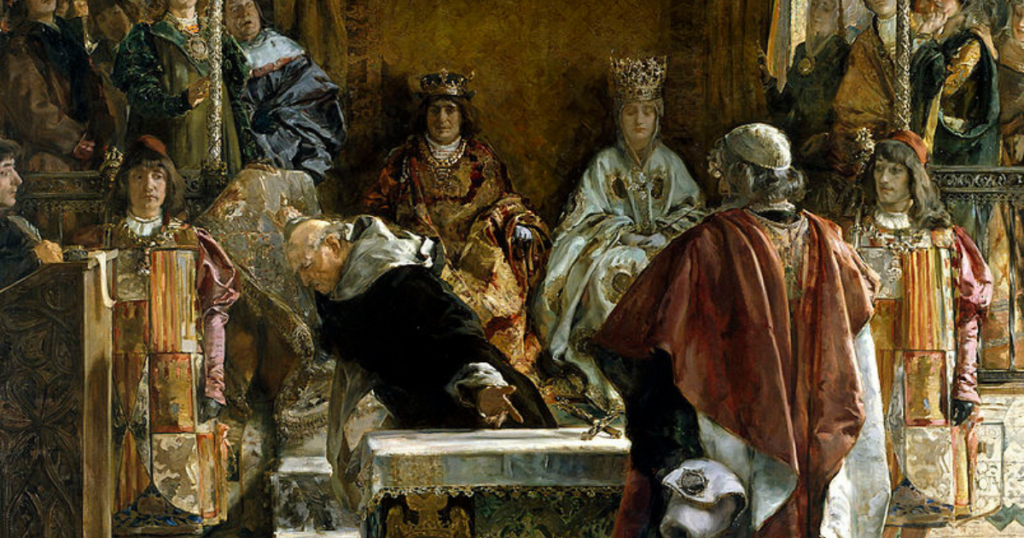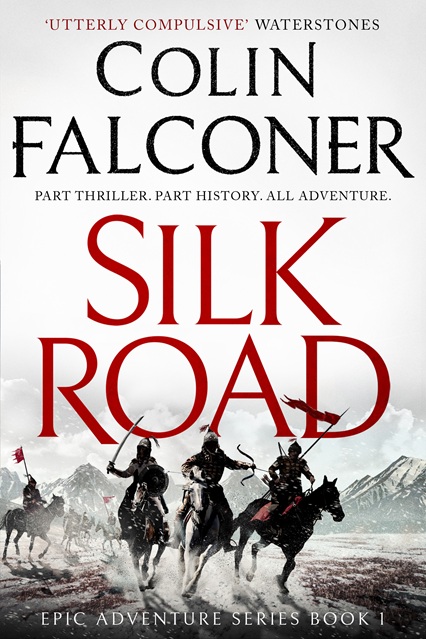For centuries, Jews functioned as courtiers, government officials, merchants and moneylenders in Christian Spain. The Jewish community was useful to the ruling classes, and to an extent, protected by them. The middle years of the Reconquista coincided with a phase of economic expansion, in which both Jews and Christians contributed to the general prosperity and shared the benefits.
But by the end of the 14th century, things were changing. Civil war and the plague stalked the country. People suffered, people starved and people died.
And people, being people, looked for someone to blame.
The conversos
In 1378, an archdeacon called Ferrand Martínez began preaching sermons against the Jews. He claimed they were the reason God had turned his wrath on Spain.
Martínez’ provocations led to a series of riots. Synagogues in Seville were burned to the ground and many Jews were massacred. Thousands more Jews died all over Spain. Some fled to France, Portugal or North Africa.
Others converted to Christianity and became conversos. By 1415, more than half of the Jewish population of Spain had been baptised, including many rabbis.
But that didn’t end the prejudice or the hate. Even if they’d taken up the Christian faith, anyone with Jewish blood was considered untrustworthy and inferior, and many people believed these new Christians were continuing to practise Judaism in secret.
There were more revolts between 1449 and 1474, brought on by plague epidemics, widespread starvation and the outbreak of another civil war.
The Inquisition
Suspicion and unrest among the population became so bad, that eventually, in 1478, the Holy Office of the Inquisition was invited to Seville to monitor the religious loyalty of the conversos and their descendants, now stretching back over eighty years.
Although Judaism was not considered a heresy, professing Christianity while engaging in Jewish practices was.
The first inquisitors arrived in November 1480 and began a reign of terror.
During the first years, in Seville alone, they pronounced seven hundred death sentences. More than five thousand other conversos were imprisoned, exiled or had their property confiscated.
The Grand Inquisitor
The Grand Inquisitor, Tomas de Torquemada, told King Ferdinand and Queen Isabella that they would not be able to put an end to heresy in their kingdom if the conversos continued to come into contact with practising Jews.
He wanted all practising Jews expelled.
Ferdinand was not enthusiastic. The Jewish community still played an important role in his war against the Moors, raising money and arms through their extensive trade networks. Abraham Senior, the chief rabbi of Castile, was instrumental in financing Ferdinand’s Granada War.
And while Queen Isabella was noted for her piety, she had vowed at the beginning of her reign to protect the Hebrew community.
But when Granada surrendered, ending the centuries long Reconquista, everything changed. The Jews were no longer needed.
The constant pressure from the Church, and the huge anti-Jewish sentiment existing in the Christian population, forced Ferdinand’s hand. Within three months, the king and queen signed the Alhambra Decree, which had been drafted by Torquemada (pictured).
The Alhambra Decree
The edict gave the Jewish population four months to either abandon their faith or leave forever.
Ferdinand and Isabella were the last of the western European sovereigns to expel their Jewish populations. England had done so in 1290, and France in 1394. The princes of Vienna, Augsburg, Bavaria, Parma, Milan and Florence had all issued similar decrees.
Those Jews who chose exile faced ruin. The export of gold and silver was prohibited, so they had to trade everything they owned for goods that could be carried away. A rich house would realise only a donkey or a bolt of linen.
They were also unable to recover debts owed to them and had to pay exorbitant fares on the ships that were to take them to their new homes. Many were killed on the way for the little they had.
This is the backdrop of my best-selling historical thriller, Converso.
From the dungeons of the Inquisition to the last days of the Reconquista and the fall of Granada, Converso is a sweeping tale of loyalty, betrayal and courage set in medieval Spain.








